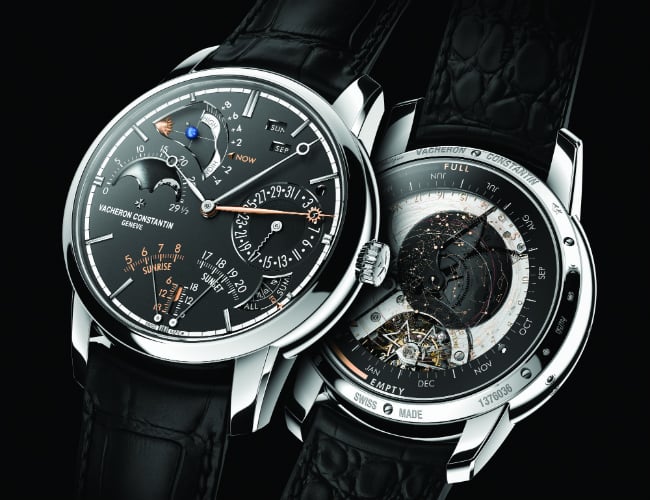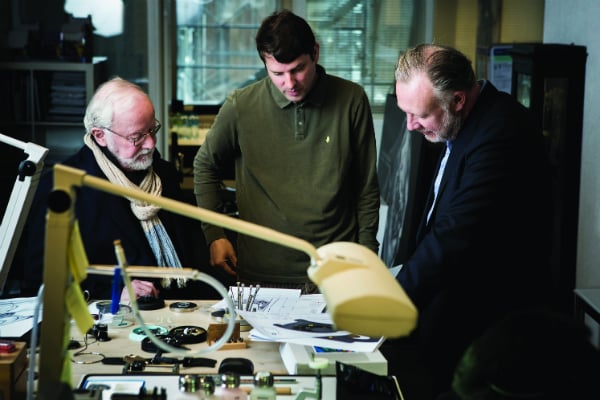Why bespoke remains the ultimate luxury watch experience
When it comes to watchmaking, it is a true pillar of real luxury

To those collectors in the know, bespoke customisation of a high-end watch can be achieved on most brands, if you have the right access – and the right budget. In some cases, it is a ‘by invitation only’ service, while others have created a separate business out of their bespoke services.
Bespoke watchmaking has been around for centuries. In the 16th and 17th centuries, skilled watchmakers such as Abraham-Luis Breguet focused their creations on special requests from the royal houses, while fashion mavens Cartier are renowned for their legendary royal jewellery pieces for the Maharajah of Patiala, Maria Felix and Alberto Santos Dumont.
Experienced collectors revered the 1930s Patek Philippe Henry Graves supercomplication pocket watch as the most important bespoke watch ever made, and the $15m to $20m price tag reached at auction a few years ago is proof of its uniqueness.
So what makes a customised watch so special?
A customised watch project is a mix of fine arts, industrial design and micromechanics, entwined with storytelling and emotional background, to define its complexity in terms of mechanics, materials and finishing.
The focus might be on métiers d’arts – the traditional ancient finishing techniques like grand feu, enamel and hand-painted dials or elaborated decoration on the case and movement – or mechanical complications. It can be a precision piece with an astronomical focus or perpetual calendar, equation of time or sonnerie, or it could have a tourbillon, or two, amongst many other possibilities.
Bespoke has always been an essential part of the historical watchmaking practice, and while some brands embrace the concept and make it public, others still prefer to keep a ‘no communication’ policy on such services.
Within the big, ‘legendary’ brands, Vacheron Constantin has developed a whole business unit based on bespoke or special orders, while Ateliers Cabinotiers prides itself on offering a specialised, extremely personalised service to its top clients.
It’s a lengthy process, starting with an in-depth conversation with the client to assess the project and thoroughly review each request before the order is even accepted – any project has to be ‘on brand’ for Vacheron Constantin and their strict values.
Vacheron has always embraced its rich heritage with prime collectors – understandable, given such names as the Tsar Alexander II, who ordered a very special piece for his son, the Grand Duke Vladimir Alexandrovich, in the 1860s. Bhupinder Singh, Maharajah of Patiala, was an avid collector of special, made-to-order timepieces from Vacheron (and other great houses), as were Henry Graves Jr and James Ward Packard, two great collectors from the early 20th century.
Vacheron’s contemporary bespoke concept was revived in 2006 and pays homage to a very particular 18th century tradition in Geneva. At the time, the wealthiest clients went to the Swiss capital to order watches direct from the master watchmakers – they worked on the top floors of the downtown buildings, in order to try and get the most natural light as possible during the day. Those cramped spaces were dubbed ‘cabinets’ and their renowned inhabitants ‘cabinotiers’.
Today, the brand considers the service a listening ear to engage in the creation of a custom-made timepiece, created on an individual commission basis. The process is confidential, and surrounded by secrecy.

There are two talking pieces Vacheron uses to show the reach of Atelier Cabinotiers – the Philosophia and the Vladimir.
The Philosophia was made on request for a client who wanted an unconventional display of time. An elegant expression of time, the piece has only one hand in the centre, marking hours, and if the wearer needs to know the minutes precisely, he needs to activate the minute repeater on the side of the case. A 60 seconds tourbillon is at six, and a custom-made precision moon-phase indicator at nine o’clock. At the back, the power reserve and two engraved constellations, all in a pink gold special case.
The Vladimir is a true masterpiece, featuring 17 complications, which took more than four years to finish. This 891-moving parts horological piece is a work of art, completely hand-made, hand-engraved and polished. A legendary piece, destined for a place in history.
For small, independent brands, bespoke can become a strong percentage of their revenue. As they make only a limited number of watches every year, face-to-face relationships with their customers is key.
The likes of Laurent Ferrier, Francois-Paul Journe and Bovet offer personalisation services and entire bespoke pieces – for the right price – with the understanding that the project can take up to four years to be delivered.
In other cases, when production is bigger and there’s a retail network in place, bespoke is not a business model but a CRM strategy, as a loyalty programme for the best clients. In 2014, Pascal Raffy, the owner of Bovet, told specialised Swiss media Europa Star: “Genuine luxury is above all a question of education.” Raffy, a collector, businessman and a passionate watch industry insider, has fully embraced the heritage of Bovet and, for him, one of the most important elements of the watchmaking experience is the personalised client-relationship management that he offers his top clients.
Kari Voutilainen makes very few pieces during the year, changing his business model to provide personalised experiences to his clients. While Voutilainen might be a name not widely known outside of bespoke watchmaking circles, to those within it he’s considered one of the industry’s true geniuses.
His watches are unique masterpieces, featuring beautifully decorated dials and excellent mechanics. If you’ve already developed the taste for the niche independent brands, a piece from MB&F, Urwerk or H Moser will eventually lead you towards Voutilainen.
Bespoke has never been a trend, nor will be. It’s one of the most ancient pillars of true luxury and will remain the ultimate experience for any kind of personal item. There is not a marketing stunt, trend setting or noveau-riche aspect on this level of the luxury industry; it’s mechanical art at its best.
Bespoke vs customisation
There is a long-standing debate over the limits and ethical conflicts of third-party customisation, and it’s as polarised as ever. Some industry leaders, such as Maximillian Büsser, owner of MB&F, and one of the most respected figures in watchmaking, say that once a watch is owned by a client, he’s absolutely free to do what he please with it. Others insist that changing the aesthetics of a high-end watch is equal to desecration. With brands such as Vacheron Constantin or Laurent Ferrier (as well as many others) offering official bespoke services, Jean Claude Biver – the VP of LVMH watches and jewellery division, responsible for the rise of Hublot – signed an agreement for an official after sales service with Bamford to certify their customisation services.
